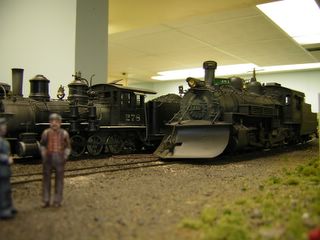So this weekend everything came together for a start. I've narrowed both wheelsets on the rear truck to the proper gauge, and am proceeding with the manufacturing of a new truck bolster. Removing 13mm width on the trailing truck and power chassis is going to be a chore; but seeing if the loco manages to walk on it's new "high heels" is going to be something else entirely.

Shown here are one each of the modified and stock wheelsets. Note the flange depth on the narrowed set has been reduced to about .072" from .120".

Here is the truck with the new (brass) bolster partially completed. Holes for the sideframe attachment screws and kingpin still need to be drilled at this point.










